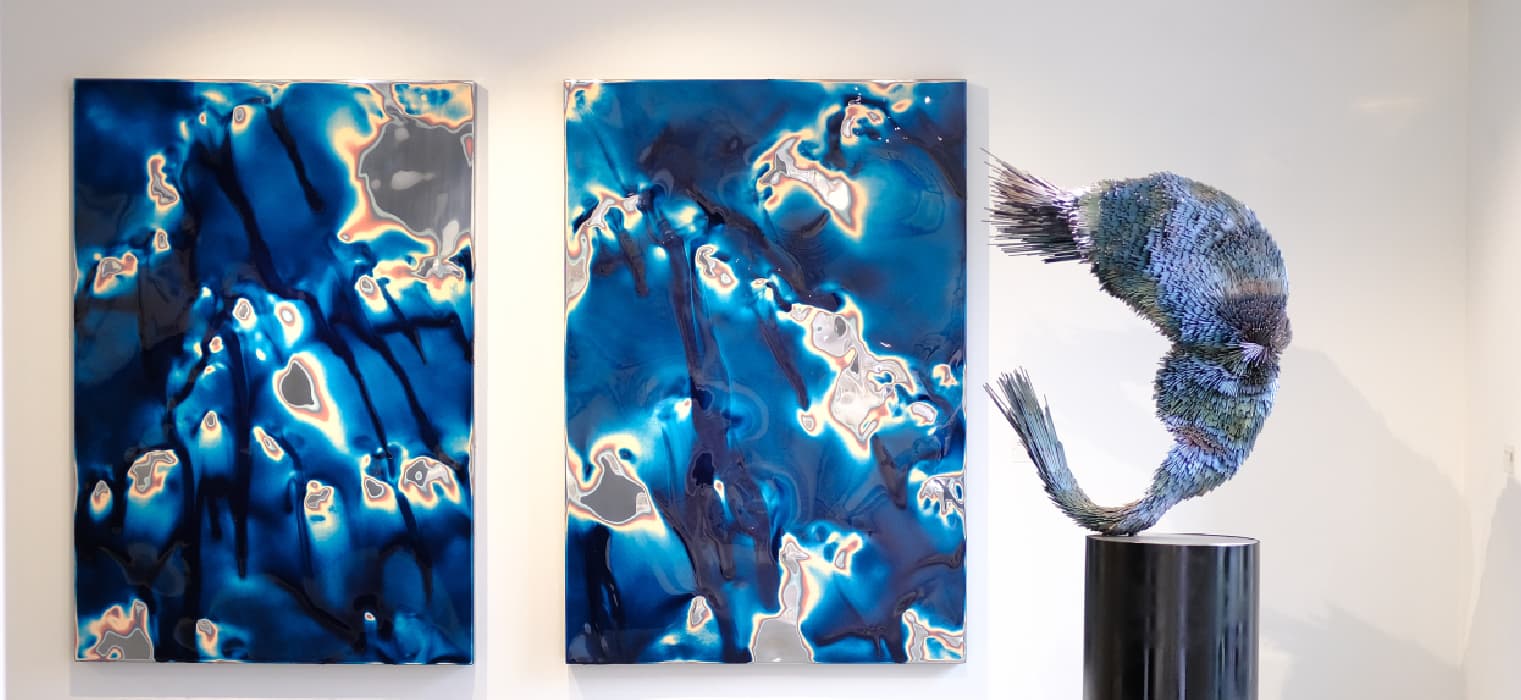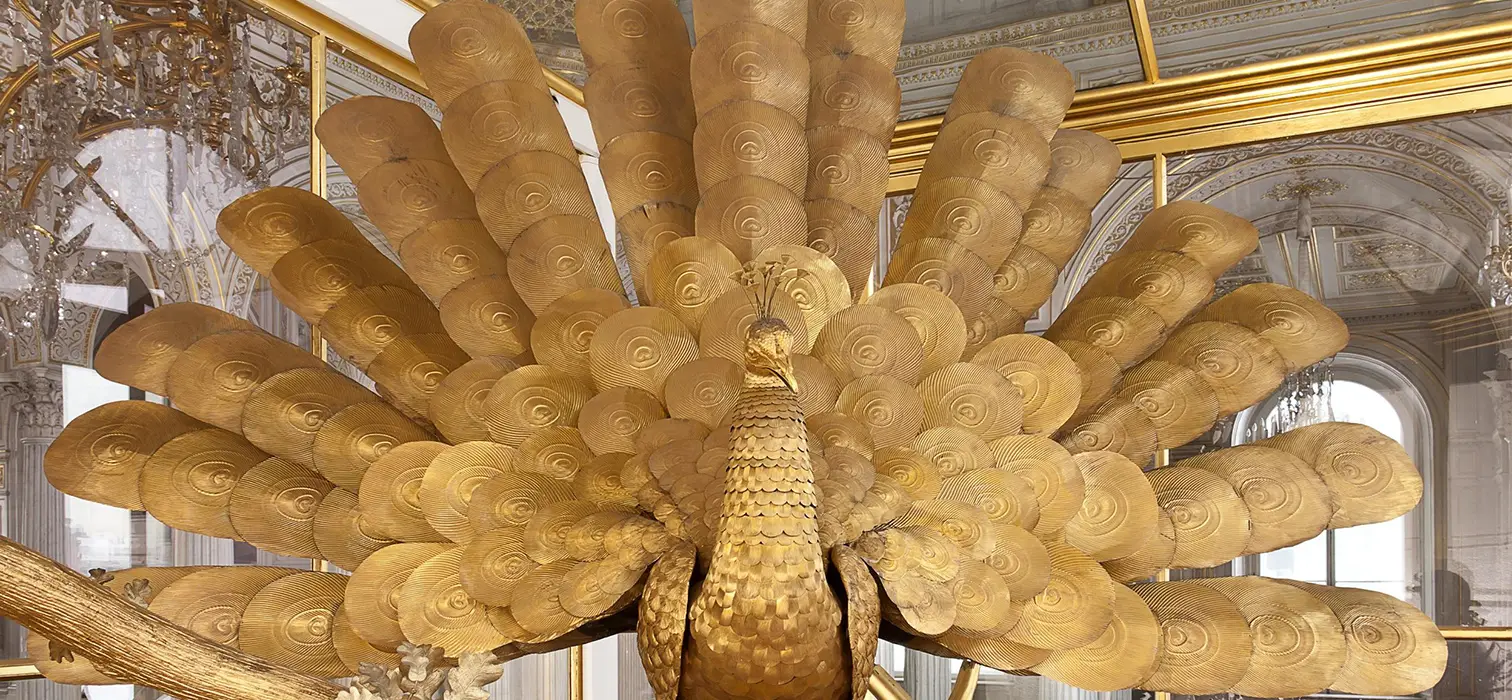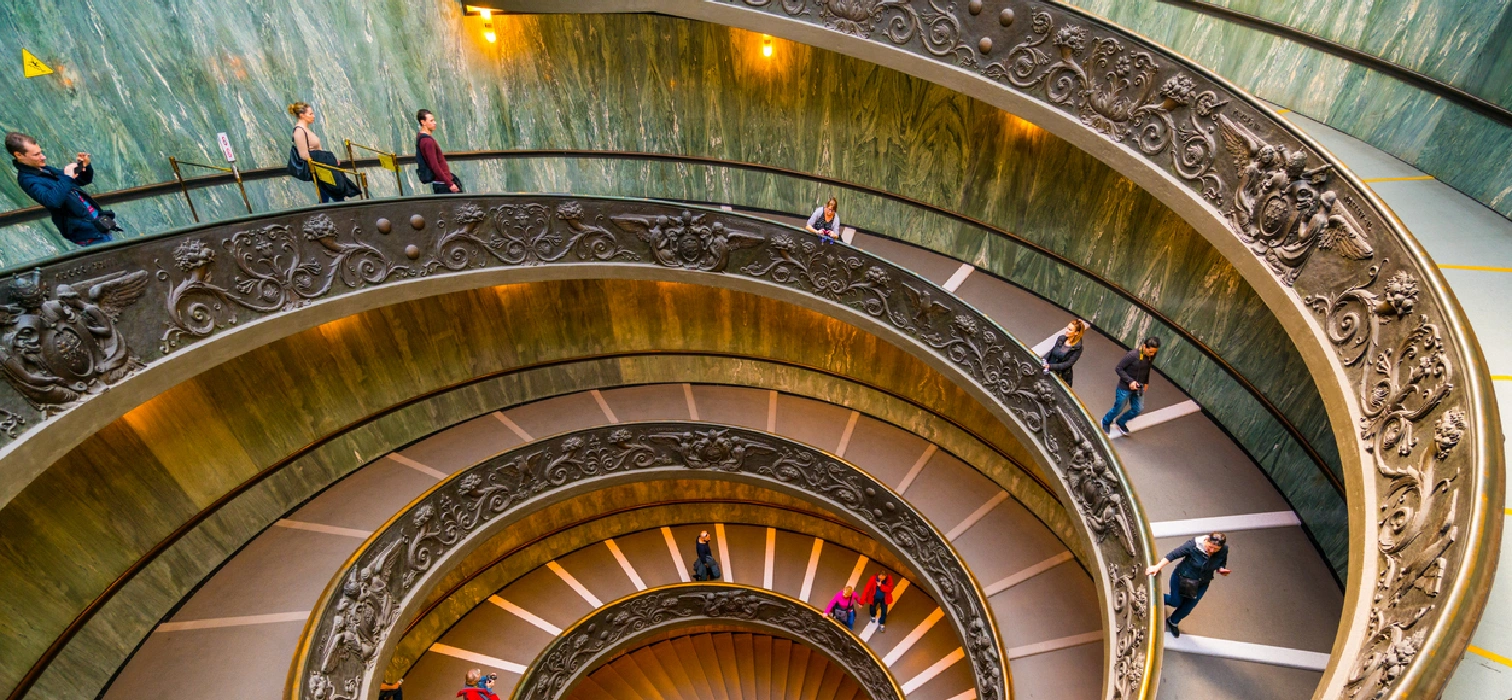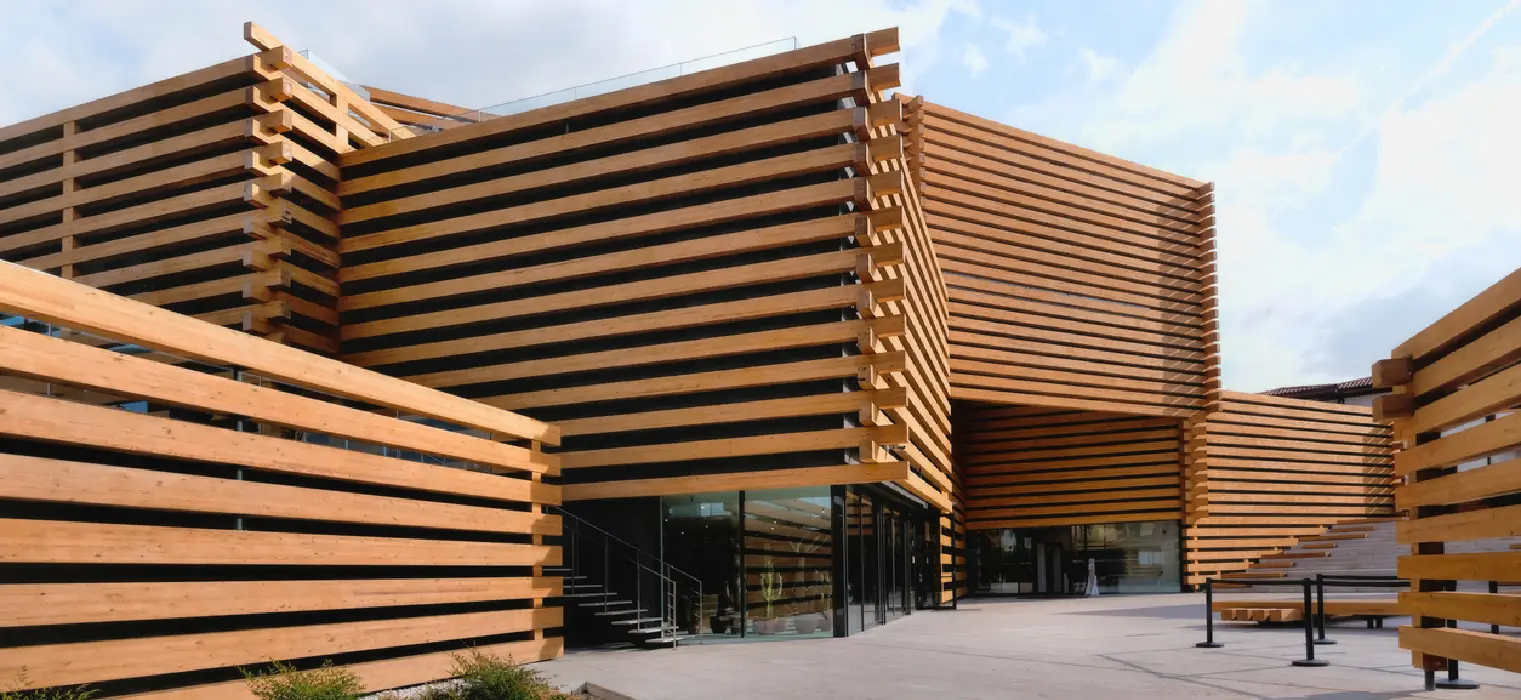
Entering the gallery from the inner garden of Ruzy Gallery, the sweet breeze of Istanbul gently pushes the visitors inside. To explore the aesthetic mathematics of nature and the universe that awaits us inside, the exhibition “Evvel”, curated by Begüm Güney, draws the visitor into a world inspired by stardust with each work.
Curated by Begüm Güney, “Evvel” explores the aesthetic and philosophical relationship between plastic arts and mathematics. The idea that forms the basis of the exhibition finds itself in the following statement by the famous British mathematician G.H. Hardy in In Defense of a Mathematician.

“What a mathematician does must be as beautiful as that of a painter or a poet. The ideas should complement each other harmoniously, like colors and words. There is no permanent place in the world for ugly mathematics.”
Setting out to examine the aesthetic values and artistic form of mathematics, the exhibition questions how mathematical constructs are used in art and how these two disciplines evolve with references from nature. Beyond mathematical analysis in terms of aesthetics and form, the works in the exhibition involve us with inspiration from nature and the universe.
The Aesthetic and Philosophical Relationship of Mathematics and Art
Mathematics and art are two disciplines that appear to be separate on the surface, but when examined in depth, they are closely intertwined. Mathematics is a tool for understanding the order and aesthetics of the universe, while art is a way of expressing and interpreting this order. Lawrence Krauss’ reflections on cosmic existence offer a striking insight into the common origin of these two disciplines:
“Every atom in our bodies came from stars that exploded. And probably the star from which the atoms in your left hand came is different from the star from which the atoms in your right hand came. This is really the most poetic thing I know about physics: You are all stardust.”

The human being is shaped by the raw materials of the stars and transforms these materials into art and mathematics with the spirit that is breathed into him. Therefore, the relationship between mathematics and art is critical to understanding the fundamental structure of human nature and the universe. The focus of the exhibition is not the mathematical beauty in art… It is the mathematics of the human being and how this mathematics is integrated with art.
At “Evvel” exhibition, where we enter as “visitors” but realize that we are “stardust” at the first step, we are greeted by Suat Akdemir’s works that draw attention to the geometric order of nature. His works focus on exploring the inner order of nature, especially through fractal geometry and organic forms. The repetitive motifs and symmetrical structures frequently seen in his works allow us to discover the aesthetics of nature once again.

Then we focus on the works of Melis Buyruk, who draws attention with her meticulous and detailed porcelain works inspired by nature. Melis Buyruk, who is the first Turkish artist to have her works exhibited at the Louvre Abu Dhabi Museum, works on living spaces, new worlds, habitats where all these species exist in an undefined way from each other. The works are hard and yet fragile. Each of the pieces of different sizes in those crowded worlds is like a sentence of the “Unending Tale”…

Across from it is Mahmut Celayir’s Afternoon of a Wanderer, whose works have been exhibited in many important art galleries around the world and are included in a number of collections, and whose works have been written about in numerous articles, catalogs and books in various languages. It is like a retelling of Buyruk’s work in a different language and genre.
At this point, it would be useful to recall the following sentences from Celayir’s previous interview about his own works: “The black and white textures in the painting are always separate elements, but my work usually depends on the balance of black and white, and I usually always start with black. Then the whites, then both of them enter the work… Finally, it finds a way, you say, here it is, and it takes a lot of time to find that balance… The process brings the painting into being. This is also a meditative attitude. The flow of the rhythm between the sky and the earth brings this feeling.”

In a side corridor, Tom Fellows addresses the visitor along the entire wall. First, Fellows’ two-piece work The Middle of Nowhere stands out as an abstract and textural work. The black tones and the indentations and protrusions on the surface make the viewer think about the complex and chaotic structure of nature and human beings. Are you looking at the cross-section of an extinct volcano? You may also be looking into the indented structure of your brain, as curator Begüm Güney feels.

Fellow’s “The Nail That Sticks Out”, a work that draws attention with its bright and vibrant colors, this time with intense use of blue and orange. Although the surface of the work has a fluid and wavy appearance, the material used is quite the opposite. Although this work, which gives the feeling of watching the movement of a liquid, draws people into their own mental processes, I must say that it has a healing effect. Because it transported me to my memories of the sky in the happy spring days of my childhood.

Just in front of Fellow’s work, you encounter another work by Jake Michael Singer, who also welcomed us at the entrance of Ruzy Gallery. Having organized a solo exhibition titled “Ten Thousand Things” at the 1600-year-old Yedikule Fortress during the Istanbul Biennial and having produced the site-specific installation “The Bennu Statis” at the Küçük Mustafa Paşa Hamam, it feels nice and complementary to encounter the works of the 1991-born artist at the Evvel exhibition. Supernova Murmur… That big explosion when we become stardust and are thrown to the earth… It is called Supernova, but you can see in it a hurricane or a phoenix rising from the ashes. Or maybe you can let yourself be mesmerized by the metal that turns from color to color in the light.

A little further on, just in front of Ruzy Gallery’s storefront facing the street, the works of Mahmut Aydın, whose sculptures focus on the evolution of the human being in interaction with his environment, between natural and artificial conditions that affect his development and will, inviting those who look from the outside in. The polyester sculptures are accented with copper. Aydın takes part in the Evvel exhibition with his works titled Ansız Anı. On these works, where we feel the themes of time and memory, the band-aids that we witness, some visible in some places and hidden in others, remind the viewer of his own wounds that occurred in the past.

In this article, of course, we will not visit the whole exhibition together. But I would like to talk about the artist Başak Özocak’s space where you will find your own “pill” word from everyone’s daily life, and another word that many of you will stop and look at with a sigh. Tevekkül… The work you will see there says what it wants to say without letting you ask the question, What did the artist want to say here?: “Tevekklül”. (Resignation)
Tevekkül is the act of leaving the result to God after making one’s best effort. The organic forms and complex structure of the work seem to symbolize the uncontrollable aspects of life and nature… The word tevekkül provides peace and trust in that chaos.
The marvelous lightness of leaving the world we are in in one place as helpless human beings trying to comprehend it, questioning the before and after, searching for the cause and the effect…

What happened in this little blue world of ours; genocides, the search for justice, economic crises, those of us in need of a sip of water, a sip of solace, a compassionate hand to reach out, a little empathy… In all this chaos, we need the knowledge that 2+2 equals 4! We need the knowledge that mathematics reassures us with the so-called certainty that “good will win in the end”! We need “breathing” spaces where art confronts us, where it opens doors to other worlds and gives us a breath.
In Ruzy Gallery’s second exhibition Evvel, a new stop of these respite spaces, you will also have the opportunity to see the works of Nazan Azeri, Leyla Emadi and Gülfem Kessler. Curator Begüm Güney smilingly adds that one of the reasons why they wanted to deal with art through mathematics in the exhibition is that Esra Çevik, the founder of the gallery, is as interested in numbers and mathematics as art due to her background in the finance sector.
The Evvel exhibition, which allows us to understand the aesthetic values of mathematics and art and their relationship with human nature, can be visited until September 15.



